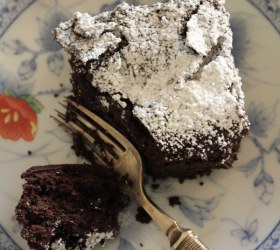Crazy about figs: I love everything there is to love about figs, their juicy, sweet and fragrant aroma, the late summer season when they are hanging heavy on the trees and the glorious exotic floral interior containing the unique tiny fig flowers and its seeds. Figs have been adored for centuries savoured by Cleopatra and Ulysses and featured throughout the pages of history being mentioned in the bible, with their leaves said to have been used by Adam and Eve. Originally from western Asia, figs are now more popular throughout the world and used widely in all manner of ways in kitchens across the globe. Figs can come in many colours and varieties of size, as a general appearance they are bell shaped with a slightly firmer skin making them easy to pull apart, slice or eat as they are. As colours vary from pale green to deep purple the easiest way to choose a fresh, ripe fig is by its softness when slightly squeezed, it should still be able to hold its shape although it will be very delicate and easily squashed so be careful when purchasing and storing the fig. Fresh figs are best stored in a plastic bag in the fridge although they have a short shelf life so are best eaten straight away or after a couple of days. As figs are one of the sweetest fruits, the flavour of the fig is intensified when eaten at room temperature, so remove them from the fridge for an hour or so before eating. Figs can be used in all manners of cooking, sliced in salads, baking, grilling with blue or soft cheese and prosciutto, in jams and preserves, blended into ice creams, or simply eaten fresh as part of a fruit salad. Figs depending on their variety don't tolerate a lot of heat so be careful when cooking with them or opt to use the dried fig which is ideal for tagines, or meat stuffing's' and plumping up in cooked or braised dishes. A few varieties of figs that you may see in your local grocer are the common Black genoa with a dark purple skin, white flesh and white and red seeds, the mission fig with deep purple almost black skin and red flesh and the Adriatic fig which is commonly eaten dried. I made this cake the other day and it is delicious, full of beautiful fresh figs, balsamic and vanilla, ideal as a tea cake served with a dollop of natural thick yogurt or cream.
Recipe Shopping List
Fig, balsamic and Polenta Cake
No reviews for this recipe yet.





Feedback and Reviews